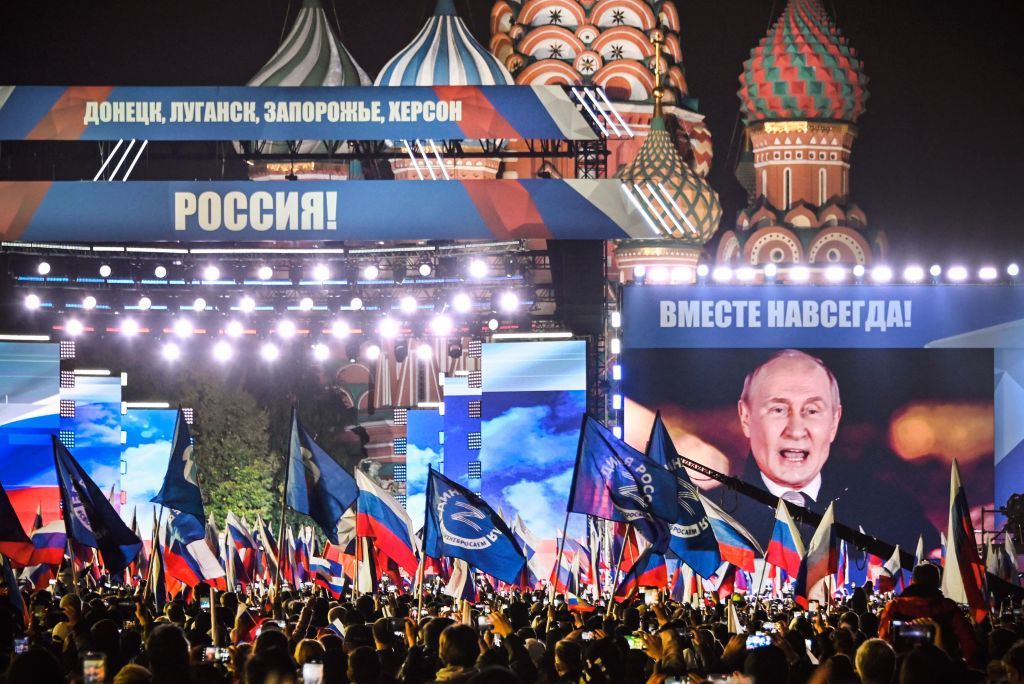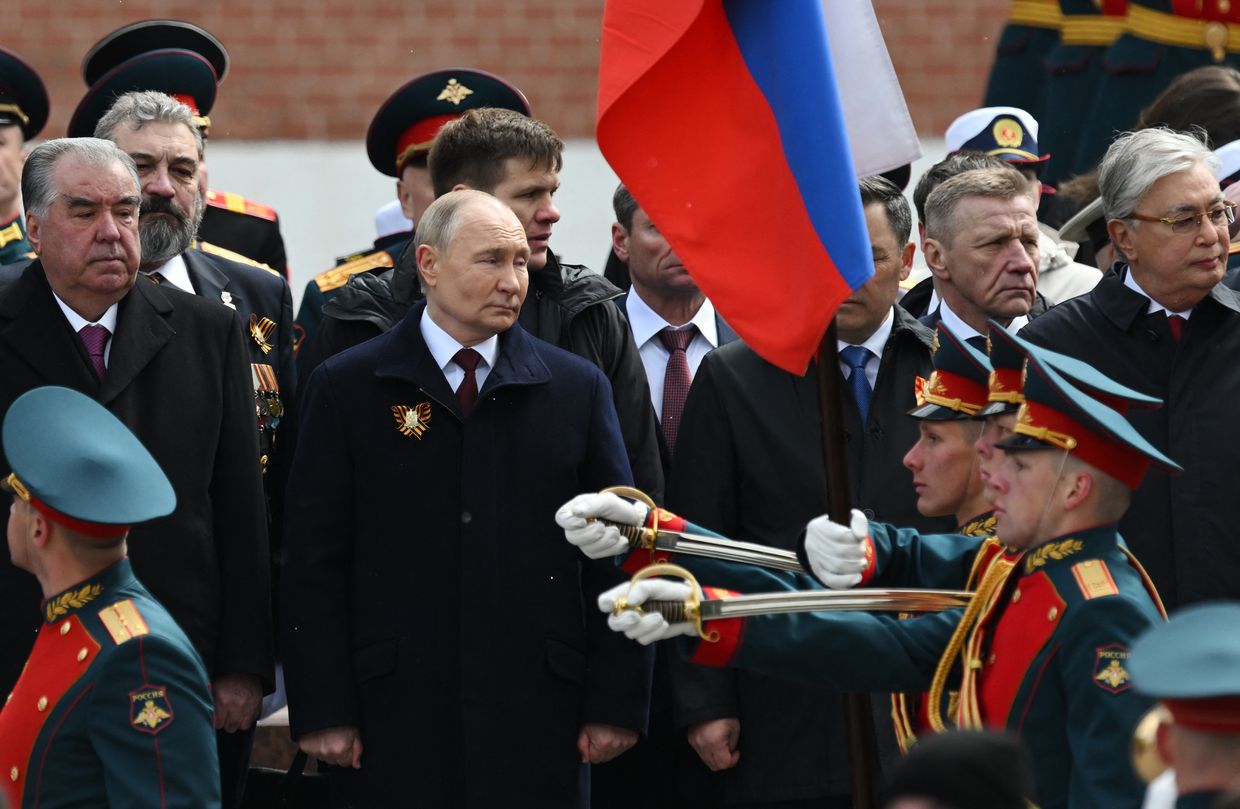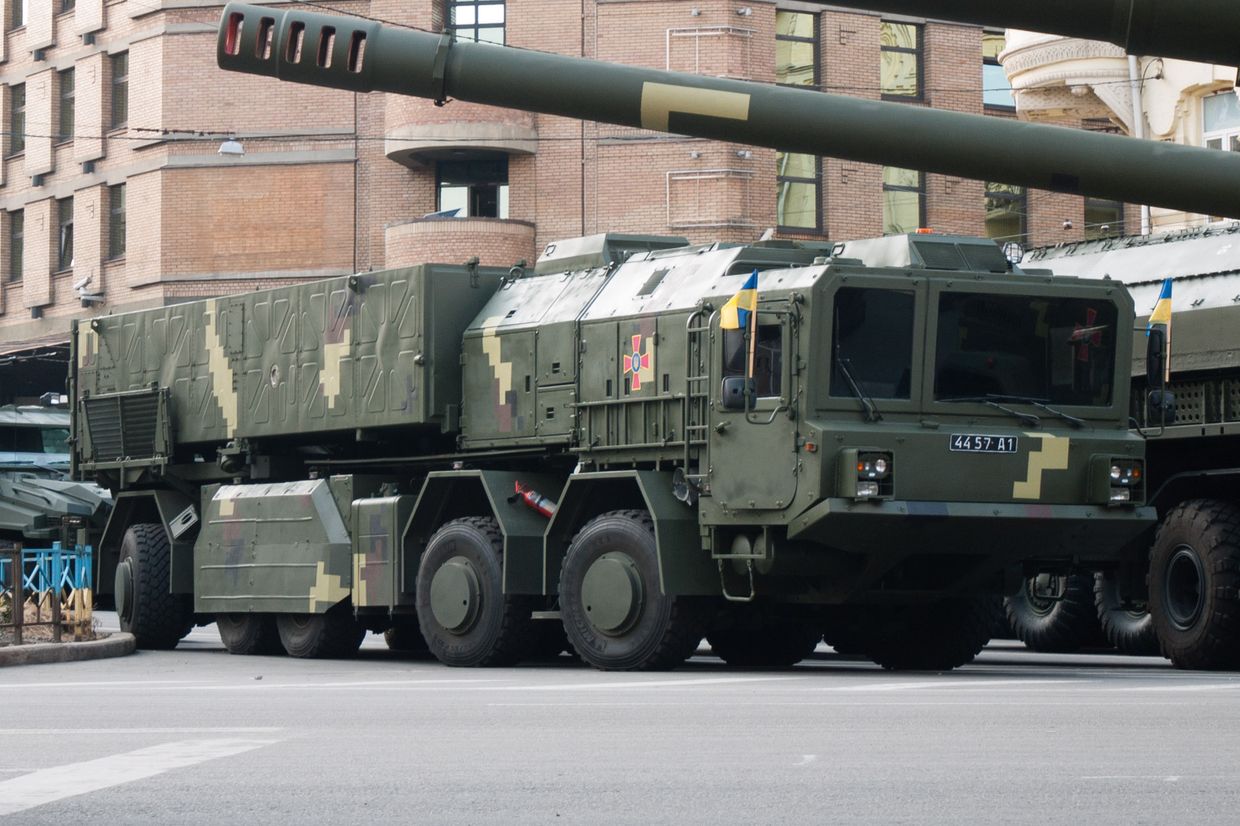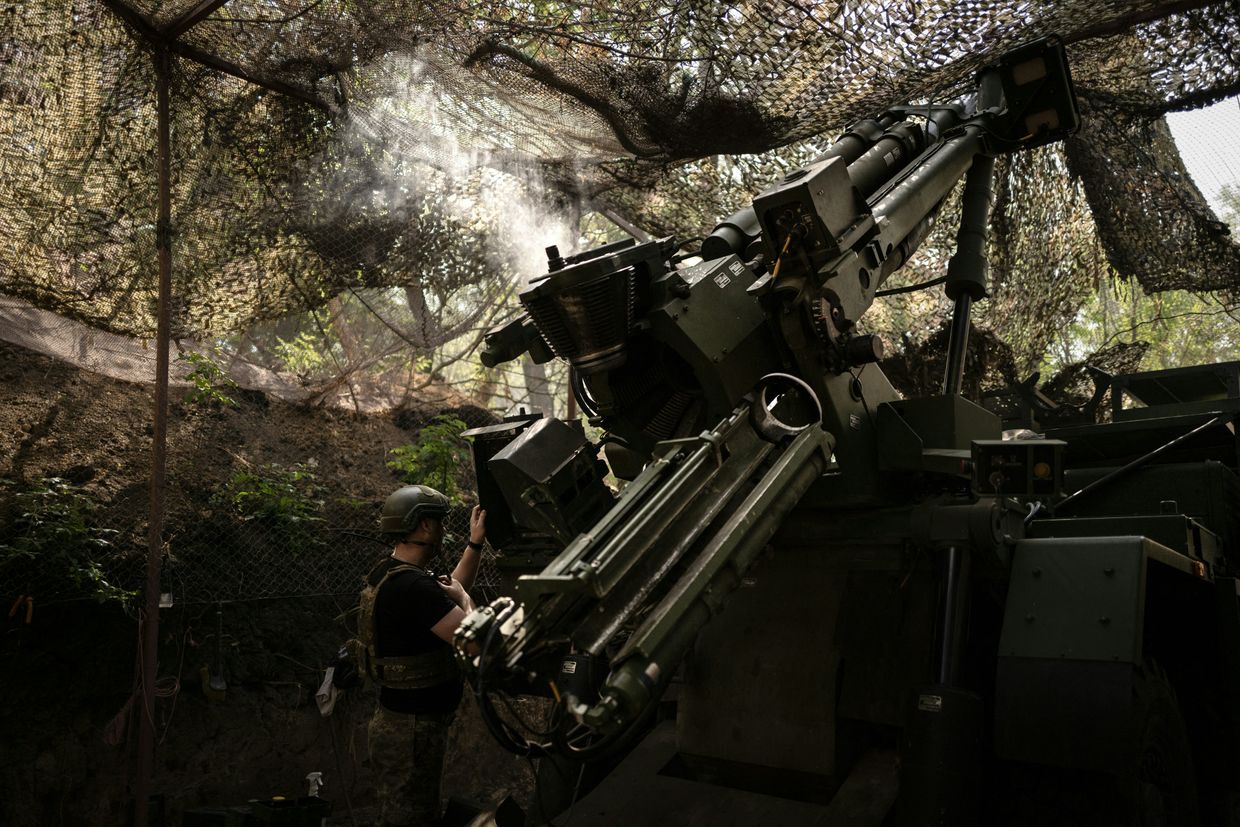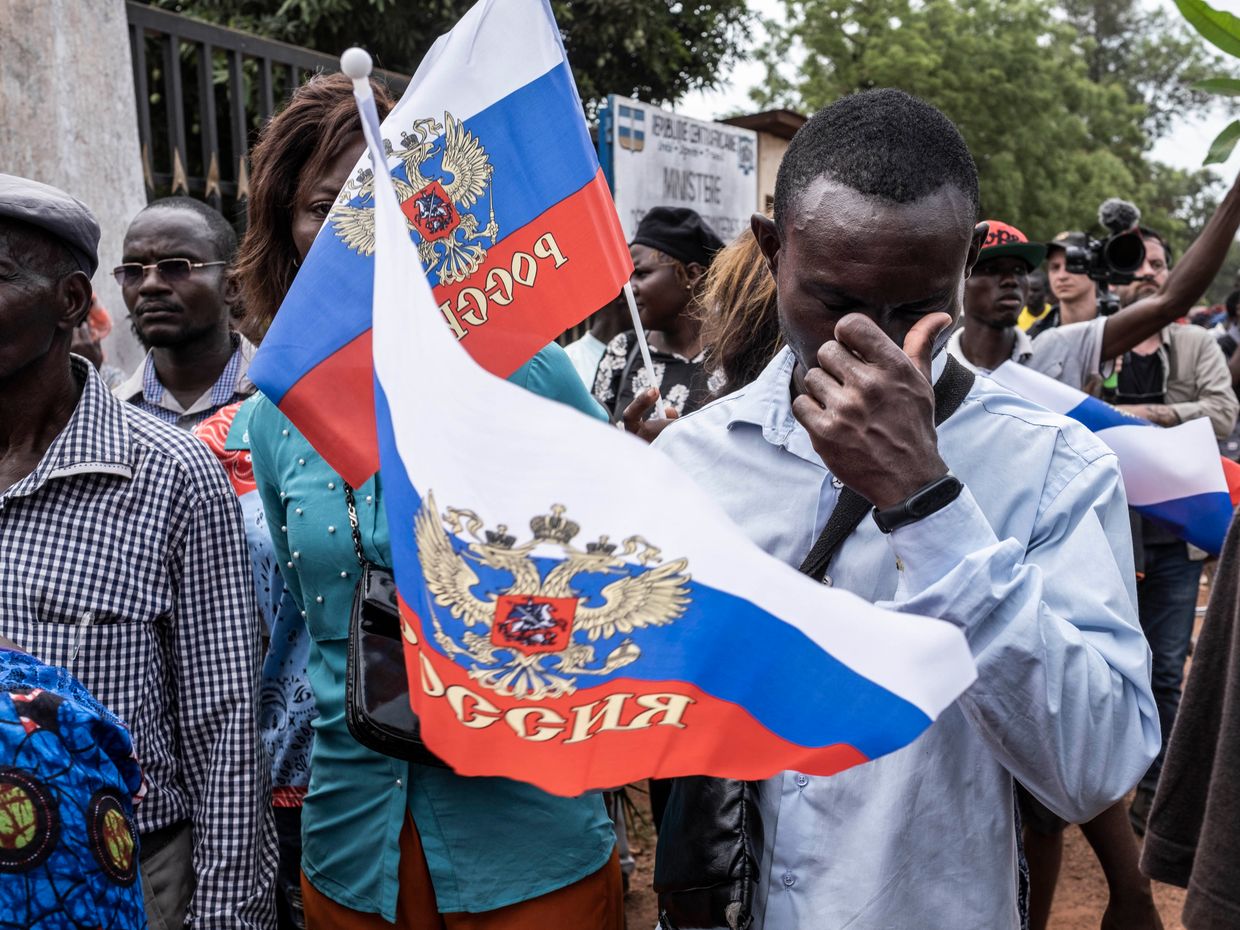2022 heralded a new era for Russia’s banks. Increasingly isolated from the global economy and laden with heavy Western sanctions, the sector saw profits fall by 90 percent compared to 2021.
For Russia’s technocrats, the future seemed dim.
Then came 2023.
Russia’s Central Bank announced last week that the country’s banks had achieved record profits last year, raking in some 3.3 trillion rubles ($36.8 billion).
The news sparked jubilation among Russia’s political elite, who have been keen to stress Moscow’s economic resilience in the face of Western sanctions.
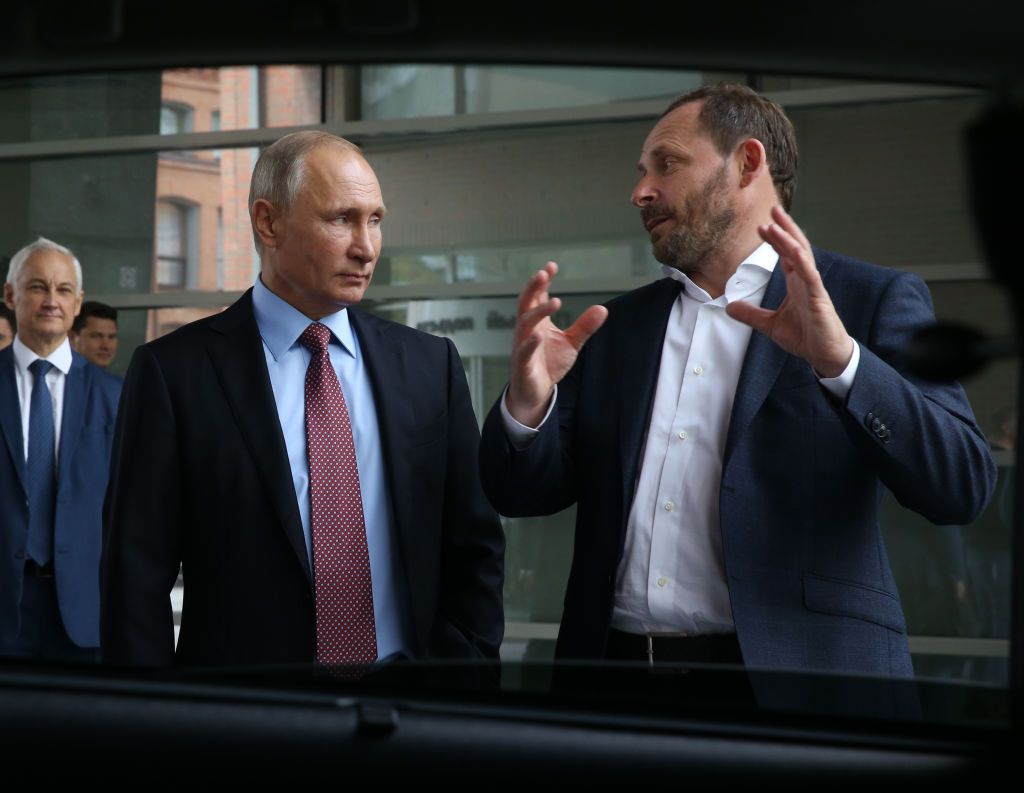
“They predicted decline, failure, collapse: that we would stand back, give up, or fall apart,” Russian President Vladimir Putin said during a speech in the city of Tula, on Feb. 2.
The Russian leader said that the news made him want to show the West a “well-known gesture” — although he declined a live demonstration, ostensibly on behalf of the ladies in the audience. “They won’t succeed! Our economy is growing, unlike theirs,” he said.
The nature of Russia’s wartime government means that there’s no guarantee that the Central Bank’s figures are completely accurate. Large swathes of data are no longer made public, while government departments have a clear incentive to present a picture rosier than reality.
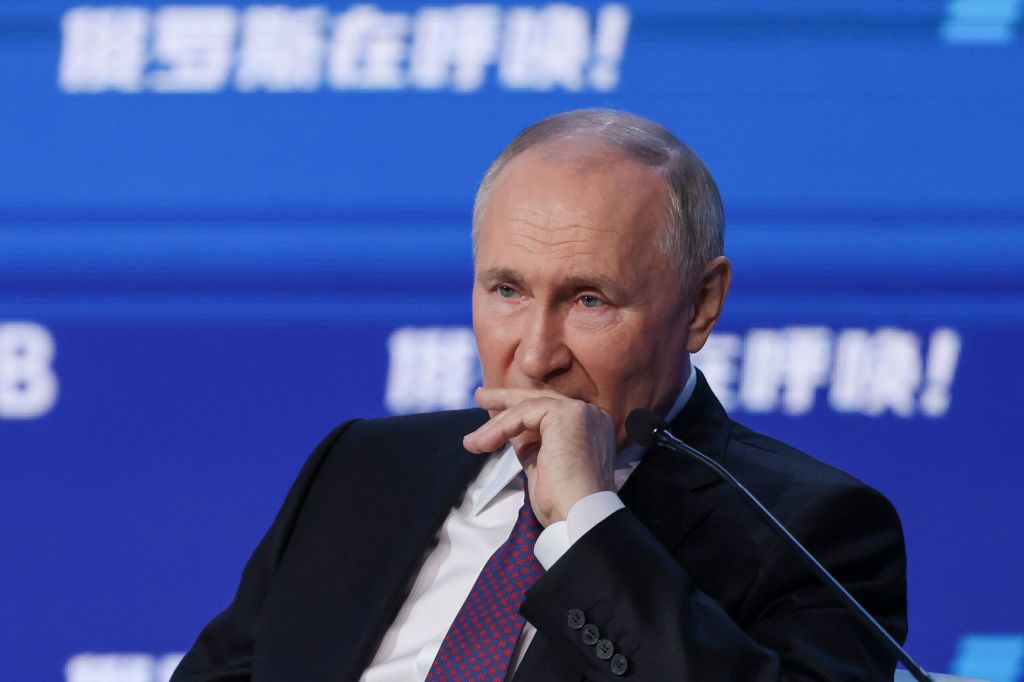
Yet there are some reasons to suggest why 2023 may have been a bumper year for Russia’s banks. Faced with the specter of economic ruin, the Kremlin is using all of its strength to keep the country’s economy moving forward.
Its method is simple: more state spending.
The cost of economic support
Some of this expenditure is a natural side effect of the war.
Almost two years since the start of the full-scale invasion, Russia’s army needs to replace lost vehicles, equip and arm its troops, and replenish its ammunition. That has meant a massive increase in military spending.
Russia’s 2024 budget will see 6 percent of the country’s GDP allocated on military expenditure, outstripping social spending for the first time in modern history. Much of that money will become profit for Russian companies.
Industries directly related to the war have boomed, according to statistics reported by the Carnegie Endowment for International Peace. Transport production rose 66.7 percent from 2022, while computers and electronics are up 42.6 percent, and navigation equipment up 72.4 percent.
The sheer force of this spending in one area of the economy also drags other sectors upwards.
The spike in production has increased demand for workers: unemployment in Russia is down to 3%. Employees will then — at least in theory —spend their new wages in their communities, helping other local businesses in turn.
Similarly, Russian soldiers on the front line often earn far more than they could elsewhere. Their money trickles home to relatives, often waiting for them in some of the country’s poorest regions. Even the war pensions doled out to the families of dead troops ultimately have a similar impact.
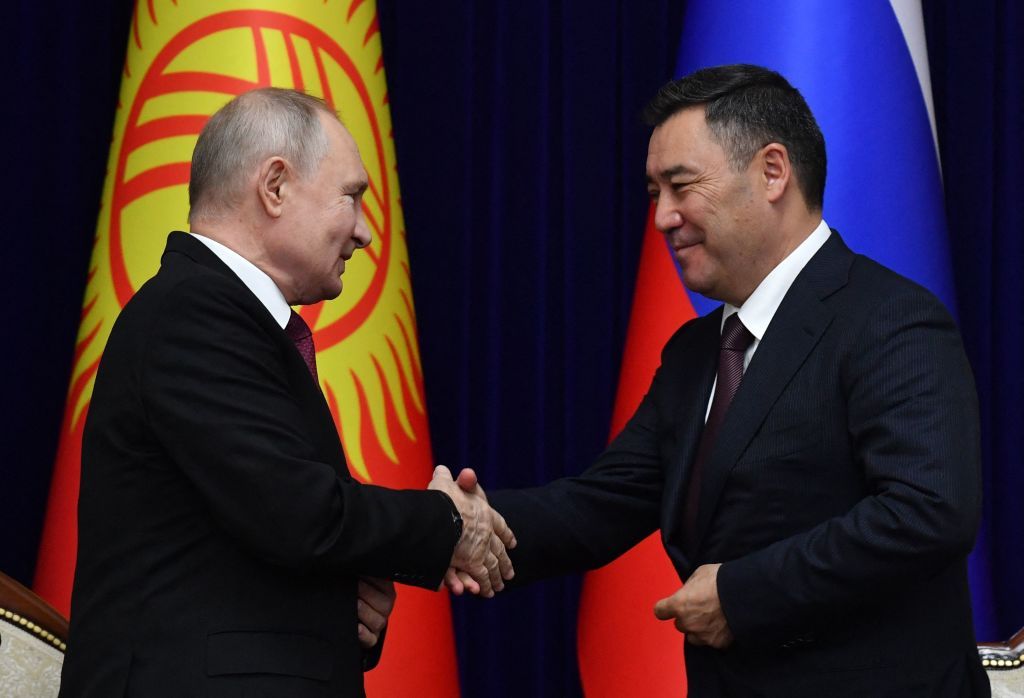
This trend has prompted some experts to speculate that Russia has become an example of Military Keynesianism: where defense spending is used to boost economic growth. Other countries have previously used this theory to their advantage, including the United States during the Cold War.
Whether such policies are sustainable in the long-term, however, is uncertain.
“The Military Keynesian argument put forward by Volodymyr Ishchenko, Ilya Matveev, Oleg Zhuravlev and others is quite plausible,” says Peter Rutland, a professor of government and the Colin and Nancy Campbell Chair for Global Issues and Democratic Thought at Wesleyan University.
“But the problem is that, in the long run, you are tying up a lot of resources producing weapons to blow things up. That does not contribute to improved living standards. It sucks investment away from civilian industry, so it will harm long-term growth and productivity.”
The Kremlin is also propping up consumer spending with a host of other programs.
Key among them is Moscow’s policy of subsidized mortgages.

Russia has several such mortgage programs — largely geared towards certain social or professional groups — but in 2020, it launched a wider scheme to boost the sluggish property market during the Covid-19 pandemic.
The new program offers buyers purchasing a new-build home a preferential interest rate of 8 percent — or 6 percent for families.
The uptake has been huge.
Mortgage lending rose nearly 35% in 2023, according to data from Russia’s Central Bank. It also said that in December 2023, 83.4% of those mortgages were subsidized.
These loans have also invigorated Russian banking, as they reap the benefits of both more mortgage repayments. And, as Russia’s Central Bank has increasingly hiked interest rates to stabilize the country’s economy, the government has had to pay banks more and more money to make up the shortfall between their “preferential rate” and the actual rate.
In September, Russian news outlet The Bell reported that officials hoped to wind down the scheme — but with presidential elections looming on the horizon, the government seems still unwilling to finally pull the plug.
On Feb. 4, Deputy Prime Minister Marat Khusnullin announced not only that the country’s 6 percent preferential rate for families would continue, but that new mortgage schemes would be launched in Russia’s Far East and occupied areas of Ukraine.
Yet again, even Russian officials admit that this kind of Russian expenditure is not sustainable in the long run. Increased cash stimuli and consumer borrowing also push up inflation. At the end of last year, Russia’s inflation stood at 7.4 percent, compared to 3.7 percent in Germany and 3.4 percent in the United States.
In December 2023, Elvira Nabiullina, the head of Russia’s Central Bank, raised interest rates to 16 percent to try and curb that effect.
In a press conference, she warned that the economy’s miraculous growth increasingly resembled a car moving too fast.
“Think of the economy as an automobile,” she said. “If we try to drive it faster than it can go, sooner or later the engine will burn out and we won’t get far. We can go, maybe even quickly, but not for long.”

The sanctions question
For now, regime technocrats such as Nabiullina are firmly behind the wheel of Russia’s economy, tackling inflation and building up foreign currency reserves.
Sanctions on Russia in 2014, as well as the legacy of the 1990s, means that Russian businesses are trained in dealing with sudden shocks — essentially prolonging how the Russian economy can survive in this period of instability, says Profesor Rutland.
“The 1990s taught Russian businesses, economists, consumers, and workers how to adapt. They are both resilient in the face of challenges and resigned to lower expectations,” he says.
“The Russian labor market generally absorbs shocks not by companies firing workers, but by paying them less until things improve. And, 15 percent of the workforce is made up of migrants, who can be fired then rehired as needed.”

There is also the continuing question of sanctions. If Russia wants its economy to remain stable, it must keep spending.
The sanctions that Western politicians hoped would throttle the Russian economy have not been able to cut off the revenue streams that allow for such expenditure.
Experts still stress that sanctions are working, albeit slower than many had otherwise hoped.
The sanctions have frozen billions of dollars of assets that would otherwise be available to Russia. Sanctions on the Russian Central Bank and the National Wealth Fund have frozen approximately $280 billion.
Euroclear has reported that the Russian funds it holds which were frozen as a result of sanctions generated 4.4 billion euros in 2023, says Christine Abely, assistant professor at New England Law and author of The Russia Sanctions.
“The sanctions reduce the resources available to Russia to fund its war effort,” Abely said.
Continuing oil, gas, and other exports, however, have given the Kremlin breathing room, providing billions of dollars in income.
2022 data from the Center of Research for Energy and Clean Air (CREA) found that 46 percent of Russia's federal budget was funded through taxes on oil and gas sales.
For now, this has allowed the Kremlin to keep balancing its books.
With inflation and a potential property bubble on the horizon, however, the pressure on Moscow will only grow for the foreseeable future. Sanctions can contribute to that pressure, but they must keep being applied — and as strictly as possible.
“If they want to put more effective economic pressure on Moscow, sanctioning powers can continue to strengthen enforcement efforts and implement more secondary sanctions, where sanctions are placed on third-party actors for their support of sanctioned parties,” says Abely.
“Sanctions — especially on new investment — and export controls on higher-tech items will have the long-term potential to affect the trajectory of the Russian economy.”
In the short-term, the Russian economy is doing fine.
